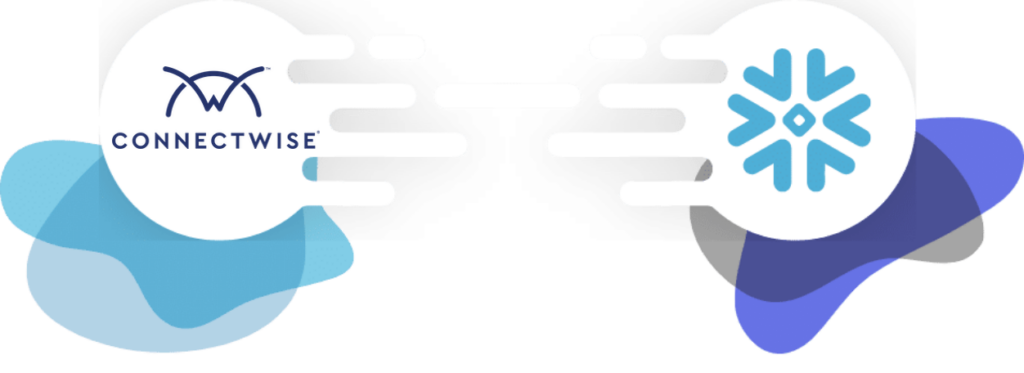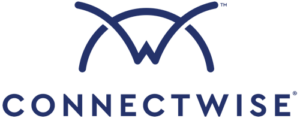One of the first steps in building the ConnectWise data warehouse is obviously to get a connection to your ConnectWise account instance using dlh.io. This can be done easily by creating an account where you will establish your connectivity to your ConnectWise account. Being able to obtain all of your information from your ConnectWise account is critically important to be successful with ConnectWise data.

When you have all of your data in one place you’re able to then articulate not only your ConnectWise data information, key metrics but you’re also able to then enrich that data with some of your other data source systems that are critical to running daily operations. This will give you the ability to forecast against actuals, determine how revenue is impacted by increases in activity by customer, and so much more perhaps only your organization has thought of through experience and business case development.
While we love our acronyms of all the things that ConnectWise can do and why your team uses it like, IT Service Management (ITSM), Professional Services Automation (PSA), and Remote Monitoring and Management (RMM) Software. At the end of the day it is all about the data, and for operations it means having:
- A modern, cloud-native solution designed for today’s hybrid workforce
- Speed to value, ease of use, and low Total Cost of Ownership (TCO)
- Continuous innovation and improvement
- Comprehensive, seamless OS management for Linux, Mac, and Windows
- A system of record for managing customer incidents and much more
But what about getting that data into a system like Snowflake, Databricks, SQL Server, Synapse, or something else downstream in your data lake so that you can start doing amazing forecasting, enrichment and Artificial Intelligence use cases that really move the needle for your business.
In today’s digital landscape, businesses rely heavily on data to drive decision-making and optimize operations. ConnectWise, a leading business management platform for IT service providers, Managed Service Providers (MSPs), and technology professionals, generates vast amounts of data across sales, finance, ticketing, and customer management. While ConnectWise provides built-in reporting, businesses seeking deeper insights and advanced analytics must consider building a data warehouse, and since DLH.io already has a built-in connector to all of ConnectWise’s platform, it is super easy to get access to your raw data. Why would you waste resources and extra time trying to build and maintain some homegrown data ingestion or integration process yourself? Smart companies would not.
What is a Data Warehouse?
A data warehouse is a centralized repository that collects, stores, and processes data from multiple sources. Unlike operational databases, which are optimized for transaction processing, data warehouses are designed for analytical queries, business intelligence (BI), and reporting. By aggregating and structuring data, a data warehouse enables organizations to uncover trends, measure performance, and make data-driven decisions.
Why Build a Data Warehouse for ConnectWise Data?
While ConnectWise offers valuable data, its native reporting tools have limitations in terms of customization, scalability, and cross-platform analysis. Here’s why building a data warehouse for ConnectWise data is crucial:
1. Centralized Data for Comprehensive Insights
Many IT service providers use multiple tools alongside ConnectWise, such as QuickBooks, HubSpot, or other CRM and accounting platforms. A data warehouse consolidates data from all these sources, providing a unified view of business performance. This enables organizations to analyze financial metrics, service delivery efficiency, and customer satisfaction in one place.
2. Enhanced Reporting and Custom Dashboards
Built-in ConnectWise reports may not always meet specific business needs. A data warehouse allows companies to build customized dashboards using BI tools like Power BI, Tableau, or Looker. This flexibility empowers businesses to create reports tailored to their KPIs and strategic goals.
3. Improved Data Accuracy and Consistency
Data inconsistencies across different platforms can lead to reporting errors. A data warehouse ensures that data from ConnectWise and other systems is standardized, cleaned, and structured properly. This reduces discrepancies and ensures that business leaders make decisions based on reliable data.
4. Historical Data Analysis and Forecasting
ConnectWise typically retains data for operational use, but analyzing long-term trends and historical patterns requires a data warehouse. By storing historical data, businesses can perform trend analysis, forecast future revenue, and identify service patterns to improve customer retention.
5. Performance Optimization and Scalability
Running complex queries on live ConnectWise databases can slow down the platform’s performance. A data warehouse offloads analytical processing, ensuring that ConnectWise operates smoothly while allowing analysts to run intensive queries without affecting day-to-day operations.
6. Advanced Data Analytics and Machine Learning
A data warehouse unlocks the potential for advanced analytics, including machine learning and predictive modeling. MSPs and IT service providers can leverage AI-driven insights to predict customer churn, optimize pricing strategies, and improve service delivery.
Enabling Seamless Migrations
When you have a DW for ConnectWise it makes it easier on your internal users and internal IT to conduct migrations to other systems. Let’s say you are migrating from or to one of ConnectWise’s competitors like, Huntress, or NinjaOne. If you have already built the data pipelines and structure for DW then segue from one system to another becomes expeditiously easier. This means less down time for your users and faster migration effort to get the key metrics that your operations need because it is an easier report of the data source instead of a complete rebuild for your analytics or downstream usage of the data.
How to Build a ConnectWise Data Warehouse
To build an effective data warehouse for ConnectWise data, businesses should consider the following steps:
- Data Extraction: Use ETL (Extract, Transform, Load) processes to pull data from ConnectWise and other platforms.
- Data Transformation: Clean and normalize data to ensure consistency across systems.
- Data Storage: Choose a scalable data warehouse solution like Amazon Redshift, Google BigQuery, or Microsoft Azure Synapse.
- Business Intelligence Integration: Connect the warehouse to BI tools for real-time analytics and reporting.
- Automation and Monitoring: Implement automated data pipelines to keep the warehouse updated with the latest information.
Wrapping Up
Building a data warehouse for ConnectWise data using DLH.io is a game-changer for IT service providers looking to maximize their data’s value. It enhances reporting capabilities, improves data integrity, enables historical analysis, and provides the foundation for advanced analytics. By investing in a data warehouse, data integration, and data analytics,, businesses can make more informed decisions, streamline operations, and drive long-term growth in an increasingly data-driven industry. DLH.io is here to help.



